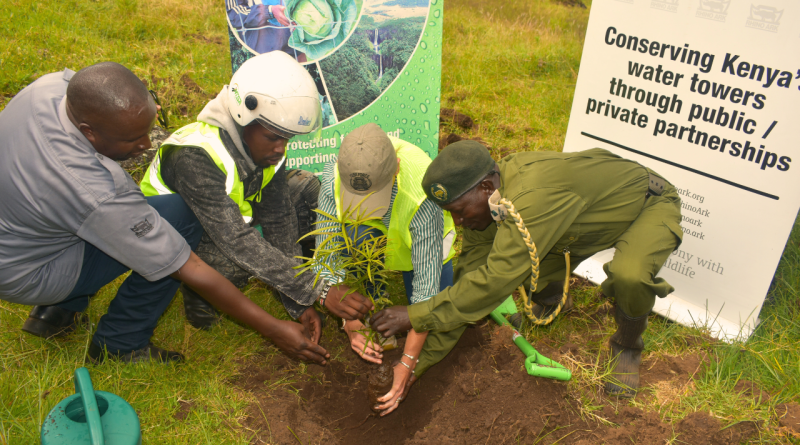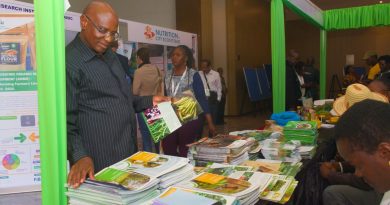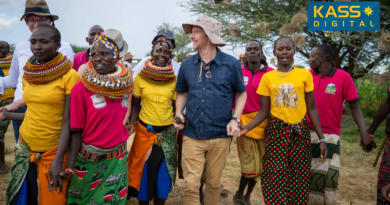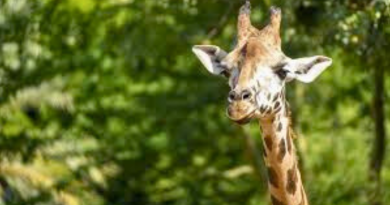Spa Meets Forest in the Heart of the Aberdares
By Chemtai Kirui
Rain falls lightly at the foot of the Aberdares, where white mist drifts over the hills of Sophia’s Block in Geta Forest. This steep stretch of land above Gatondo village in Nyandarua County, once scarred by logging and fire, is now stirring back to life with hundreds of young indigenous trees swaying in the damp air, marking the forest’s quiet renewal.
At the foothills, the ground is alive with movement.
Dozens of people kneel in the soil, their chatter rising with the mist as seedlings slip into freshly dug holes. Hands — some manicured, some calloused — turn brown as water splashes over roots.

Among them is Petra Somen, Managing Director of Serenity Spa — equally at home on the rugged slopes of the Aberdares as in a wellness room.
She and 35 of her employees have traded spa oils for spades, joining Rhino Ark, the Kenya Forest Service (KFS), and local residents to plant 1,000 trees ahead of Mazingira Day, part of the country’s wider plan to grow 15 billion trees by 2032.
“For me, a tree is hope,” says Petra, founder of Serenity Spa and Jani Beauty. “It’s not just about shade — it’s a symbol of growth. Every tree we plant is a sign that Kenya can grow too.”
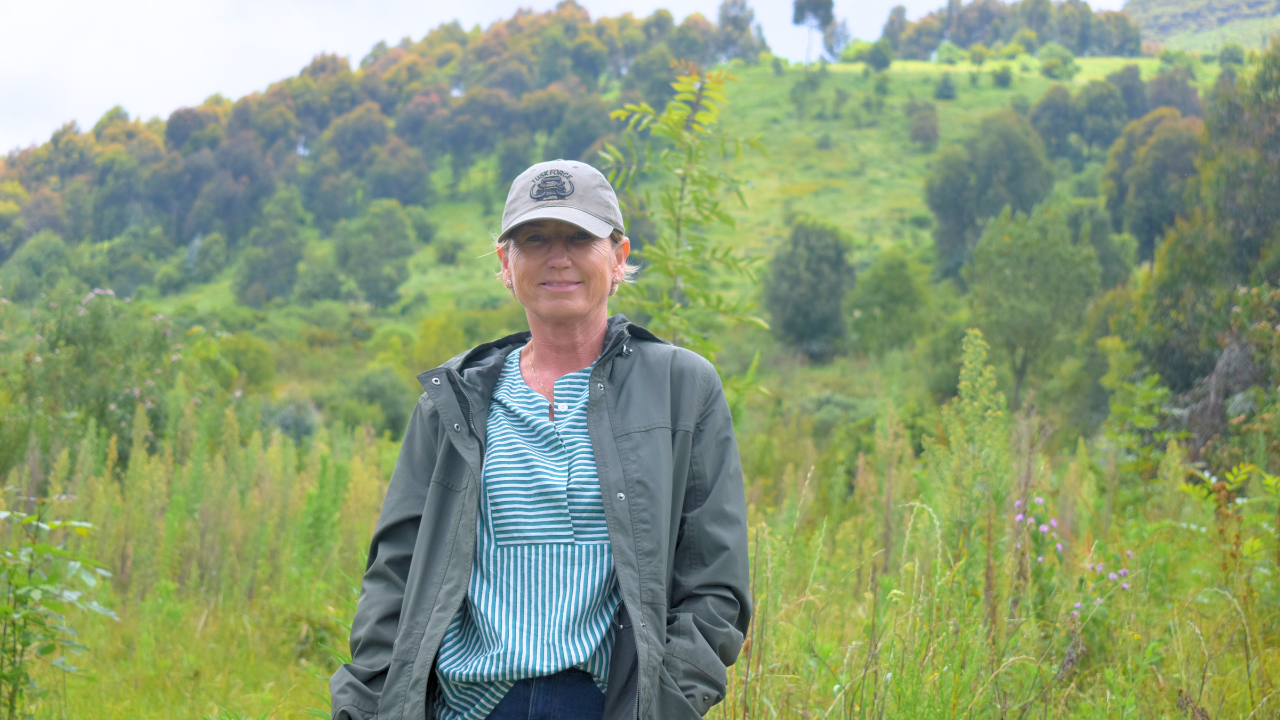
Petra Somen, Managing Director of Serenity Spa, during a tree-planting exercise at Sophia Block, Geta Forest in Nyandarua County, on October 7, 2025. Photo/Chemtai Kirui.
Petra’s conservation journey runs deep. For more than 14 years, she has supported Rhino Ark Kenya — a charitable trust protecting Kenya’s mountain forests — through the annual Rhino Charge, an off-road motorsport challenge that raises funds for forest conservation.
When she’s not in the spa, she’s behind the wheel with the Bush Babes, an all-women team navigating rugged terrain to help safeguard the Aberdares.
Her business, too, is rooted in nature: Jani Beauty uses organic, locally sourced ingredients — from coffee and tea to honey.
“When we plant trees, we’re also protecting the ecosystems that sustain us,” Petra says. “It’s full circle, nature gives to us, and we give back to nature.”
The revival of Geta Forest is putting locals back to work — from former loggers turned conservation champions to guides earning livelihoods from a healthier ecosystem.
One of them is Joyce Wanjiku, a 39-year-old local guide who leads hikers across the Aberdares.
“I used to collect firewood to sell,” Wanjiku says. “Now I earn from taking visitors to the same mountains I once depended on for wood. It’s better this way. I protect the forest, and the forest provides for me.”
Joyce belongs to an 18-member group of guides, three of them women, leading both local and international tourists to peaks like Rurimeria, Table Mountain, Seventh Falls, and Mount Satima.
On a good weekend, she earns up to 3,000 shillings per trip.
“It may not sound like much,” she says, “but every week it adds up. Sometimes visitors even support my children’s school fees.”
The mother of three says she dreams of inspiring more women to join her trade.
“Not many women think guiding is for them, they see it as hard work,” she says. “But I tell my daughters, this is good work. You earn clean money, you protect nature, and you meet good people.”
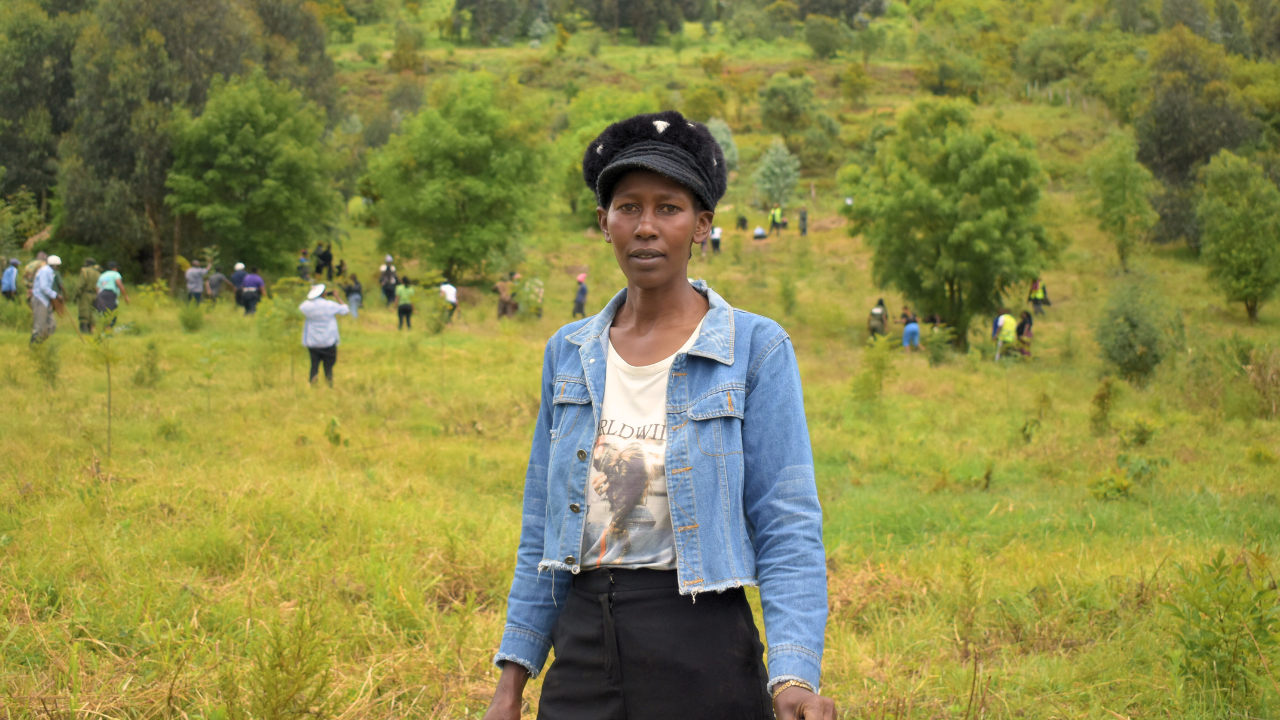
Wanjiku says they often visit nearby schools to talk to pupils about conservation and join them in tree-planting exercises.
“We tell them that planting trees means clean air and good life,” she says.
Wanjiku’s school conservation outreach mirrors this year’s Mazingira Day slogan, ‘Turudi Primo, Tukapande Miti,’ which calls for institutionalizing tree planting in schools.
President William Ruto today led the nation in commemorating Mazingira Day by planting trees at State House, Nairobi, alongside First Lady Rachel Ruto and pupils from State House Primary School.
The event, held under the theme ‘Citizen-Centric Tree Growing and Environmental Stewardship,’ marked the first Mazingira Day under its new name — a holiday that has evolved from Utamaduni Day, Huduma Day, and before that, Moi Day.
The symbolic exercise, he said, was a call to every Kenyan “to make their contribution to the national tree-planting drive.”
The President announced that 15,000 National Youth Service (NYS) personnel will partner with the Kenya Forest Service (KFS) to revive 300 nurseries in all forests and establish 17 mega nurseries capable of producing two billion seedlings annually.
“The seedlings will include fruit trees to strengthen not only our food security, but also create opportunities for export, agro-processing, and jobs for our people,” Ruto said.
He added that forest restoration remains central to climate action and food security.
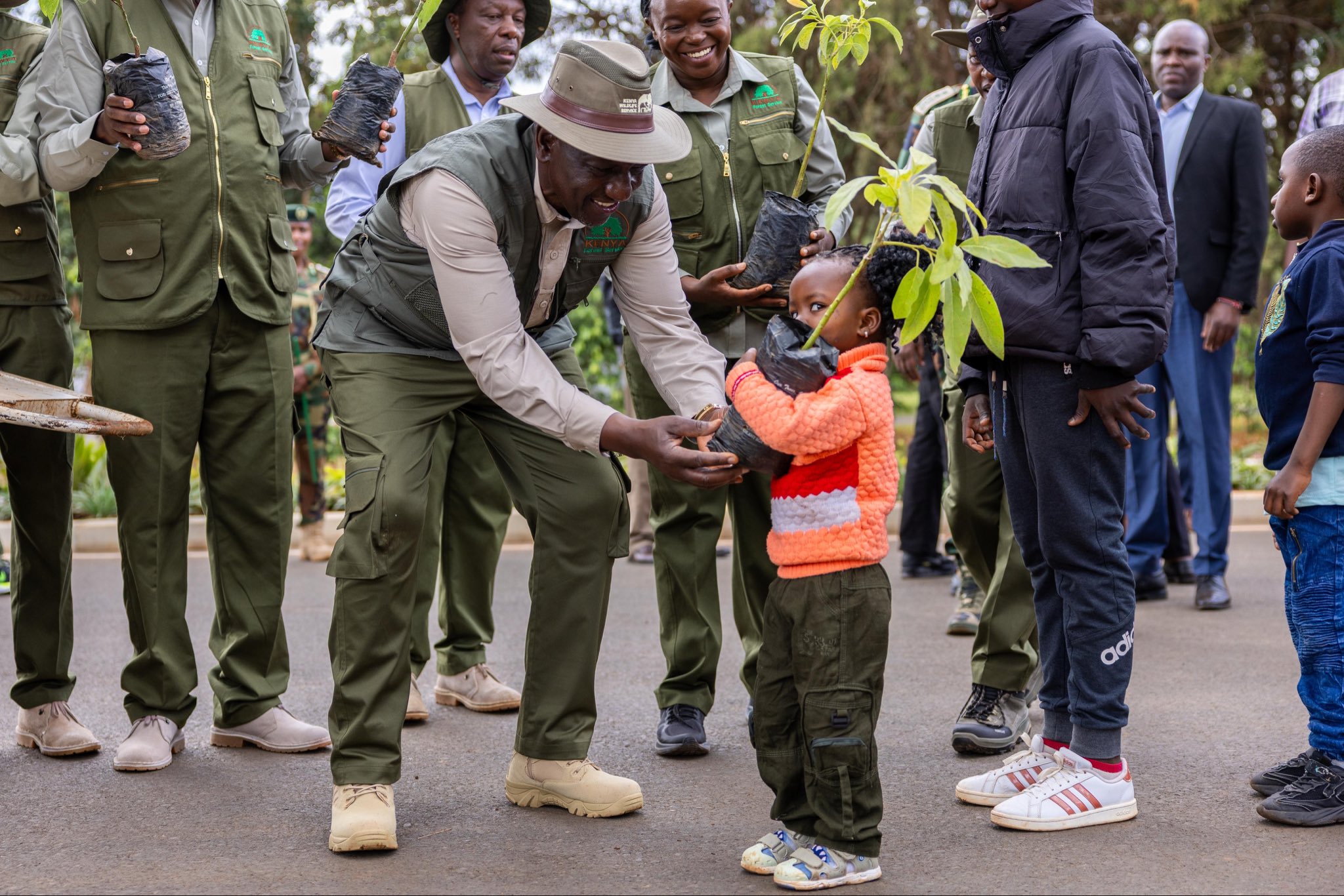
The event saw citizens and government officials return to their former primary schools to plant fruit trees — a nationwide ‘All-Government, All-Society’ effort, symbolizing a national homecoming to nurture the next generation.
The Cabinet Secretary for Environment, Climate Change and Forestry, Dr. Deborah Barasa, said the tree-planting activities witnessed across the country, are aimed at establishing fruit orchards in 35,000 primary schools, targeting over 100 million fruit trees this season.
This national push for tree cover is anchored in law.
Kenya’s Forest Conservation and Management Act provides the framework for community participation and targets 10% tree cover nationally — and an even more ambitious 30% by 2050 — as part of the country’s climate resilience strategy.
But progress is uneven.
Funding shortfalls, poor seed quality, and weak nursery capacity have slowed the ambitious Jaza Miti programme, launched in 2022 to anchor the 15-billion-tree agenda.
Conservationists say that without addressing these gaps, planting targets will continue to lag, slowing progress toward higher forest cover.
In Geta Forest, Nyandarua, that national vision is taking shape on the ground. The plan to restore forests and promote sustainable livelihoods that create jobs while protecting the ecosystem appears to be taking root — if the voices of those at the tree-planting event are anything to go by.
According to Samuel Gachie, the Forest Station Manager at Geta, the area’s transformation has been years in the making.
“This section of the forest was badly degraded by illegal logging and fires between 2017 and 2020,” he says, pointing toward the mist-covered hills. “But since then, we’ve been working with the community to protect and restore it. The difference is clear — people no longer graze livestock or cut trees here, and the forest is now regenerating naturally.”
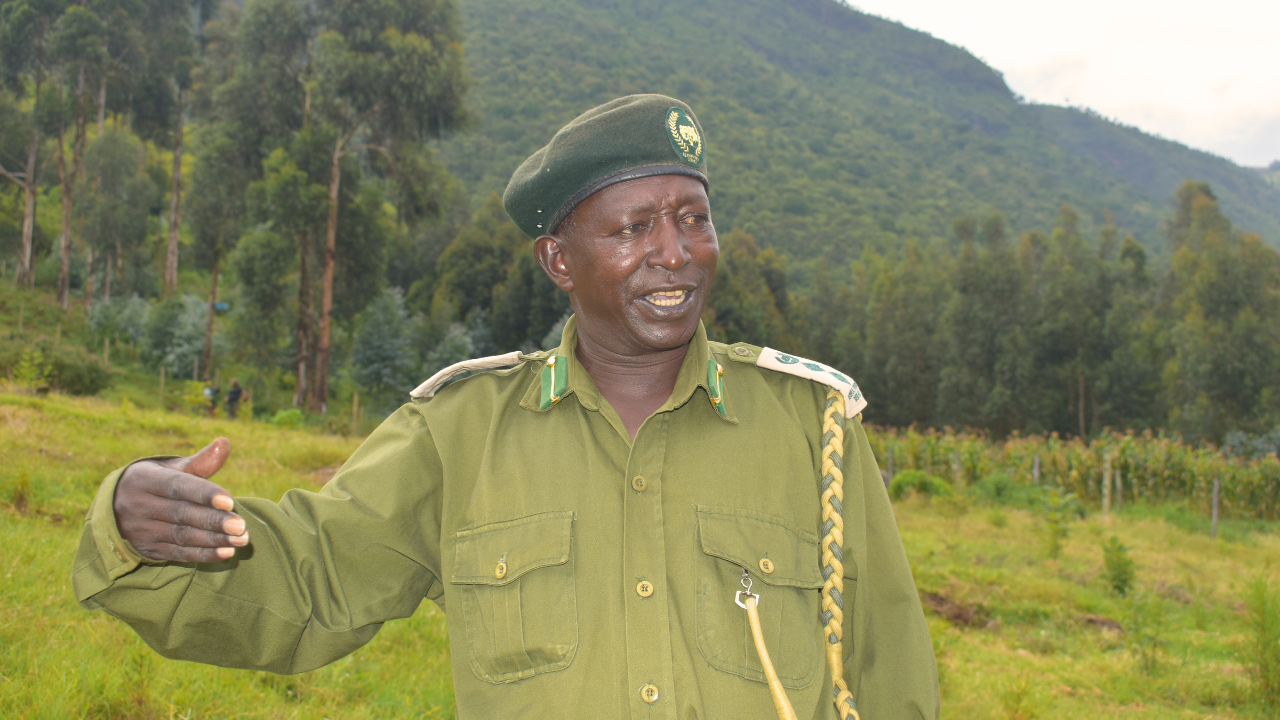
Gachie credits the private-NGO-government collaboration for turning that change into reality.
One such group is a network of boda boda riders, once accused of aiding illegal logging but now turned forest guardians.
Daniel Maina, a boda boda rider from Wanjohi, once ferried illicit forest products. Now, he plants trees.
He’s part of a group of riders trained by the National Transport and Safety Authority (NTSA) and Rhino Ark on road safety and forest protection.
“Before, most of us didn’t see the damage we were causing,” says Maina, pausing after planting his eighth seedling. “Now we know the forest gives us life. When we protect it, we protect ourselves.”
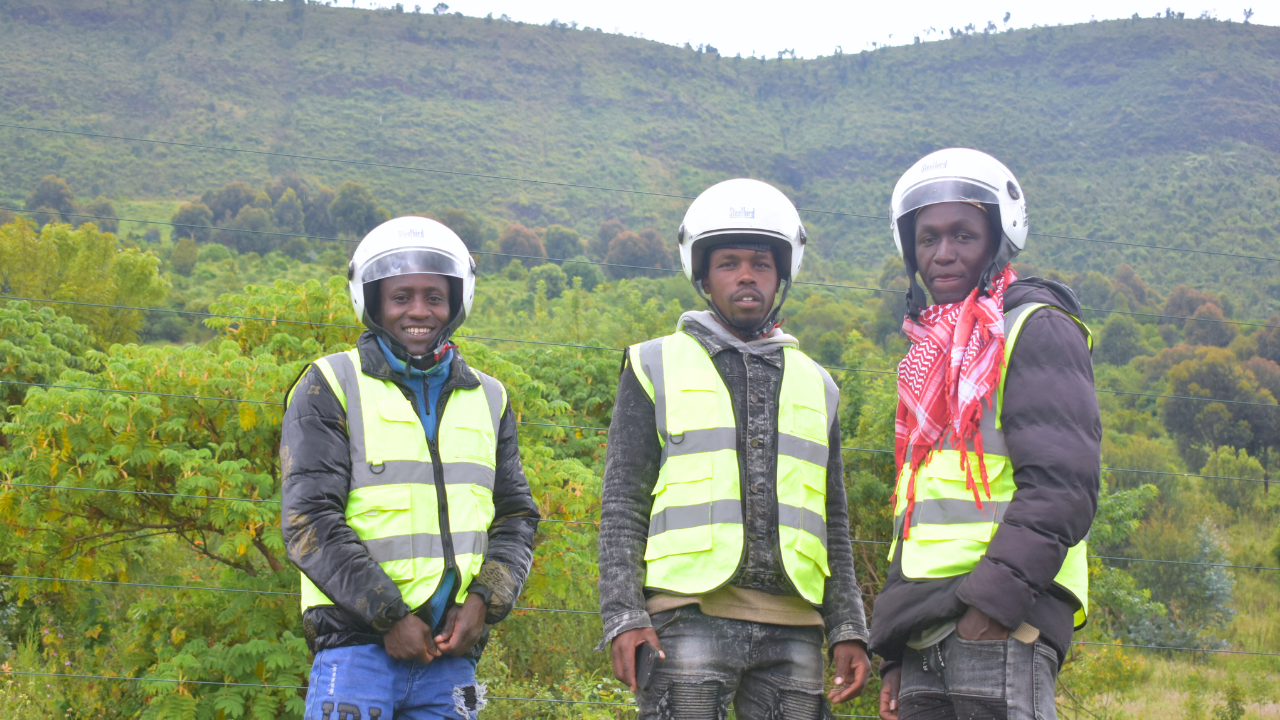
The riders are using their daily interactions to spread awareness.
“We talk to people every day,” he says. “We tell them not to destroy what feeds us.”
For Petra, that’s precisely the goal — to make conservation second nature to every individual, starting with her own team.
“The more people we involve in these exercises, the more they spread the word,” she says. “I hope my staff will go back home, tell their children, their families — maybe even plant trees without being told.”
By late afternoon, dark clouds began to roll in.
It was the rain that sent volunteers running down the hills to take cover after a day of tree planting, as the mist thickened over the Aberdares.
“We’re not just here to plant — we’re here to grow,” said Adam Mwangi, Rhino Ark’s Fence and Community Manager leading the exercise. “A tree only counts when it survives. We’ll be back to water, weed, and monitor.”
Petra watched her staff pack up their tools — faces streaked with soil, laughter mingling with the sound of distant birds.
“If each of us takes small steps — one tree, one habit, one person at a time — we can change how this country looks and feels,” she said. “That’s how change begins.”

